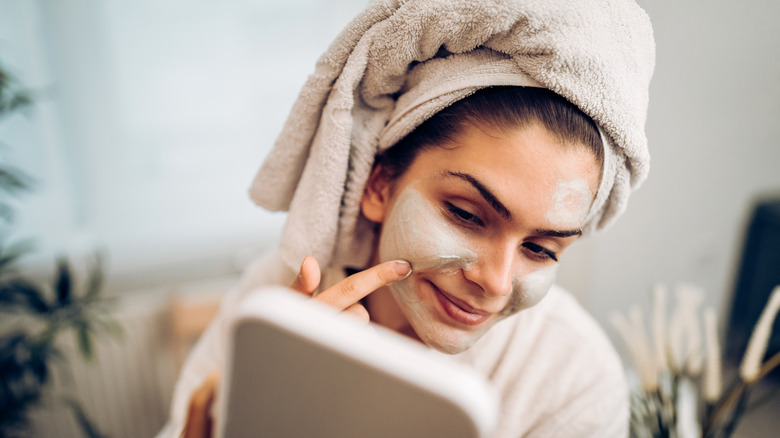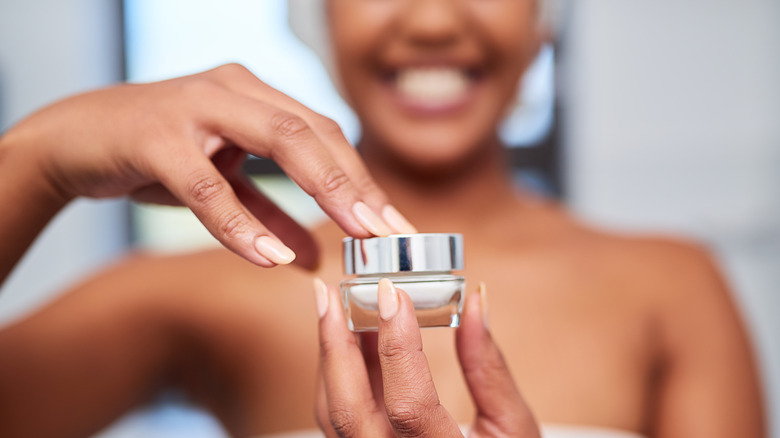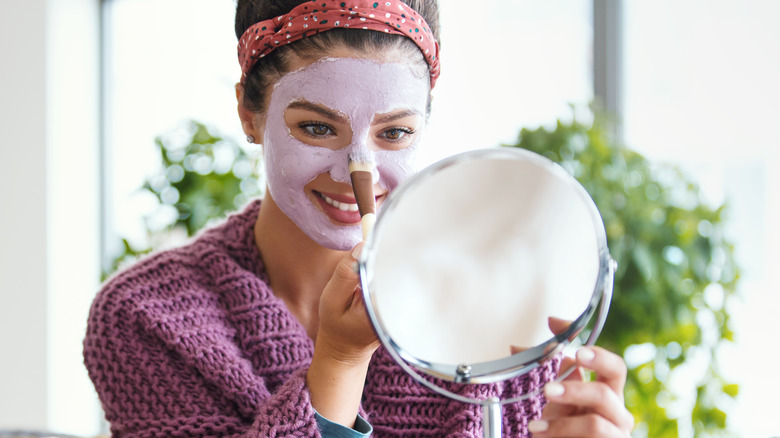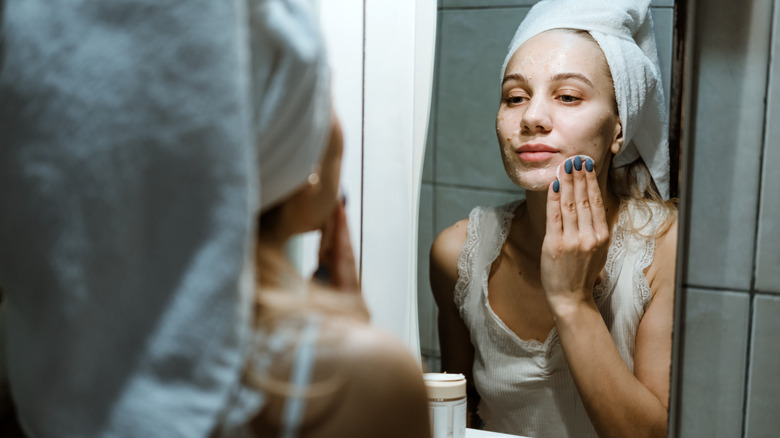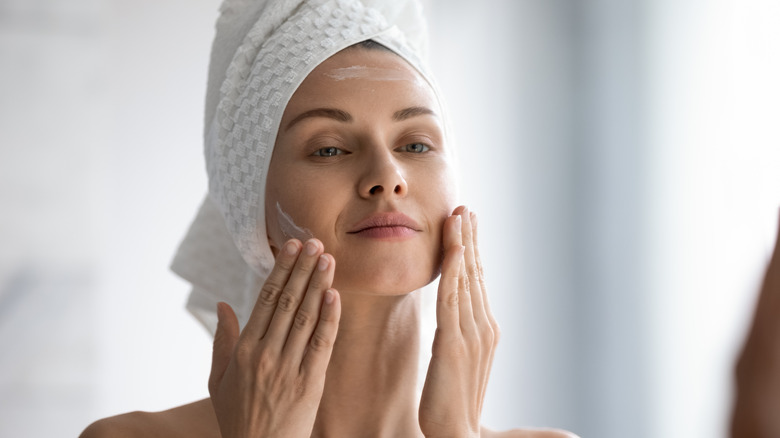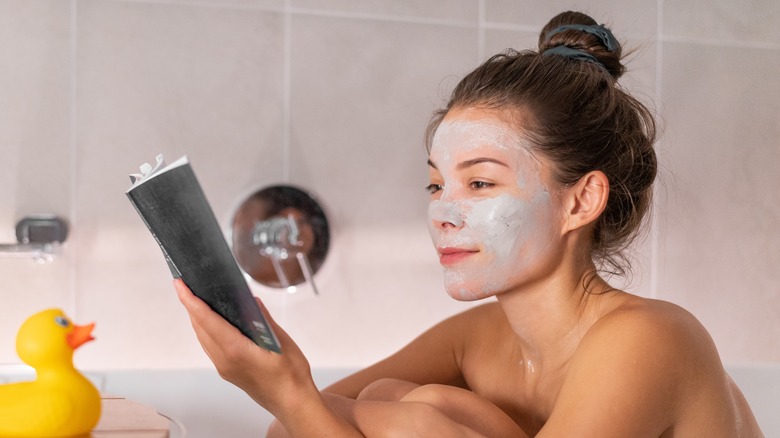Wearing A Clay Mask? Here Are The Rules You Should Never Compromise On For Optimal Results.
Sticking to a good skincare routine is essential for anyone interested in keeping their skin looking the best it can. Besides, a skincare routine is a great way to pamper yourself and feel like a million bucks. One ingredient you can add to your routine is clay. Clay face masks have always remained a popular skincare staple, with good reason. Clay masks, typically ones with kaolin or bentonite, are famous for removing oil residue and impurities, acne, and helping with various skin conditions such as dermatitis, psoriasis, eczema, and rosacea. They are also quick to use and add a great touch to your self-care routine.
However, as with anything, you've got to make sure you use it right. If misused, they may not be as effective and can even have detrimental effects, such as drying out your skin and irritating it. We've compiled a guide of all the tips you need to ensure you're using your clay mask correctly and yielding the best results.
Pick the right mask
The first step to using clay masks correctly is to pick one that compliments your skin. The color and texture of your clay mask can help you decide if it's right for your skin.
"The colours range from red to grey, while texture can be coarse, fine and fluffy. White clay is fine-grained, which is best suitable for sensitive and dry skin as it reduces the excess oil without entirely drying out the skin. Whereas, green clay is stronger and absorbs more oil, making it suitable for those with an oily skin type." Cosmetic Physician Dr. Jamuna Pai tells Vogue India. She also reminds us to always do a patch test before applying a clay product on our skin, ensuring it won't react harshly.
There are also different consistencies of clay masks out there in the market. Skincare brands offer ready-to-use clay masks as well as clay in powder form, which you might prefer if you'd like more control over the thickness and texture of your mask. However, ready-to-use options are easier to use.
Apply the right way
Now that you've picked the right mask for your skin, it's important to make sure you put it on clean and dirt-free skin. Applying a clay mask on skin with bacteria and dirt will not ensure it does its job well and won't give you the results you're looking for. You can use a gentle cleanser to get the job done, leaving your skin clean, dry, and ready for a clay mask.
Additionally, Dr. Sasha Banner, a licensed esthetician, told Well+Good that you should avoid parts of your skin that may look and feel especially dry, as clay can cause it to dry even more and drain it of moisture. Dr. Banner notes that this is because ingredients such as salicylic acid, known for oil absorption, are likely included in your clay mask. Don't let this scare you, however, because a clay mask will still be a great step for your skin, just as long as you apply it carefully, only where it is most needed.
When to wash it off
A common misconception is that face masks must be completely dry before washing them off. However, with clay masks, the opposite of that is true. They are, in fact, most effective when removed before they dry completely. Bentonite is a key ingredient in most clay masks and is known for its moisture-absorbing capabilities. Although letting your mask dry completely is very satisfying and makes for a great self-care selfie, leaving it on too long will leave your skin feeling dry and irritated. So the next time you put on a clay mask, wash it off before it dries up. This will typically take 10 to 15 minutes but can vary from person to person.
It is also advisable that you wash off the mask with warm water followed by a cool rinse if possible. You can take it up a notch using a washcloth and circular motions to remove the mask. Don't forget to make sure you've cleared your whole face, including your hairline and nostrils, where residue product may be left.
Proper aftercare
Now that you know exactly what to do, from picking the right mask to taking it off, what comes after? Does it matter? Of course, it does. Clay masks are very good at what they do — removing oil and water. As such, you need to give your skin some of that lost moisture back. Use a moisturizer or a sheet mask (or both) to get the job done, leaving your skin plump and full of hydration. Some great moisturizing ingredients you can look for include aloe vera, hyaluronic acid, and water!
Keep in mind that this advice applies regardless of skin type. Yes, even oily skin types. It is a common myth that oily skin does not need to be further moisturized. Just make sure you pick a moisturizing agent suited to your skin type, and you will have the perfect result. You can also speak to a skincare specialist for expert advice on the products to use.
Consistency is key
As with all skincare, consistency is key. Sticking to an effective skincare routine will give you the results you're looking for, giving the ingredients you put on your skin that chance to do their job best. With clay masks, you should ideally stick to a frequency of once a week, and this is because clay masks are known to be excessively drying if overused. However, if you have oilier skin, you could use it twice a week if you feel your skin agrees with it.
Do keep in mind that everyone has unique skin, and sometimes trial and error is what works best. Adding a clay mask to your skincare regime is a fantastic idea, and while remembering everything we've outlined, ensure to listen to your skin and do what makes it feel good. Go ahead and tweak each tip to your liking, opting for what feels best for your aesthetic and lifestyle.
